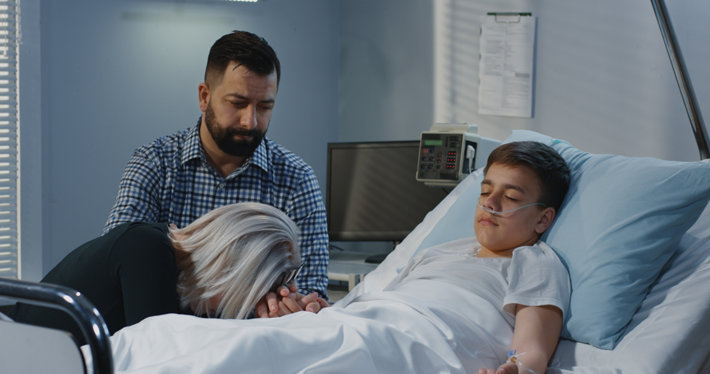Underage Drinking – A Dangerous Problem for Young America

For centuries, there have been young people who abused alcohol, and for just as long, there have been adults who tried to stop them through wise counsel. In recent times, governments have attempted to address the problem through age restrictions – deeming it illegal to drink before the age of 21.
The problem of underage drinking persists. But it is still worth talking about, and exploration for solutions is still relevant. Current conversation can cast new light on the problem through statistical studies, modern medical assessments and predictions. For example, we have learned through studies that today’s underage drinkers could very well be tomorrow’s alcoholics.
And that is a primary reason to continue the discussion.
What is Considered Underage Drinking? And Does Government Intervention work?
Underage drinking is typically defined as any alcohol consumption before one’s 21st birthday. Other than a few exceptions in just a handful of states, any alcohol consumption by someone under the age of 21 is unlawful and is considered “underage drinking.” (Some states still allow alcohol consumption under the age of 21 if the individual is accompanied by a parent or someone who is 21 or older.)
Has increasing the legal drinking age to 21 worked? Yes, to a certain degree, according to stats published by the CDC. Let’s take a look:
- There was a 16% medium decline in motor vehicle crashes in states that raised the legal drinking age to 21.
- Drinking declined from 59% in 1985 to 40% in 1991 in surveyed youth aged 18 to 20 after the minimum drinking age was raised to 21.
- Evidence also shows that the minimum drinking age of 21 also helps to prevent other drug dependencies, suicides, homicides and adverse birth outcomes.
The same article points out that, unfortunately, underage drinking remains common and is a public health problem. What are the statistics? And what do parents need to know and do to ensure their children, and even their adult children ages 18-20, do not drink alcohol?
A Look at Statistics—The Prevalence and Harms of Underage Drinking in America
According to the National Institute on Drug Abuse:
- In 2019, about 24% of young people ages 14 and 15 reported having at least one drink. In that same year, 7 million young people ages 12 to 20 said they drank alcohol beyond “just a sip” in the past month.
- NIDA reports that people from the age of 12 to 20 drink more than 4% of all alcohol consumed in the United States each year, and most of this alcohol is consumed illegally.
- Studies also show that, though underage people drink less often than adults when underage individuals do drink, they consume more alcohol than adults do. More than 90% of the alcohol consumed by young people is in bouts of binge drinking.
- In 2019, about 4 million adolescents and young adults under the age of 21 reported binge drinking at least once in the past month. About 825,000 young people reported binge drinking on five or more days over the past month. Young people also consistently use alcohol with more frequency than tobacco or marijuana.
Underage drinking is physically harmful. There is a body of evidence that suggests underage drinking is one of the primary causes of injury and death for young people.

When young people consume alcohol, they put themselves at risk for death from motor vehicle crashes, homicides, alcohol poisoning, falls, burns, drowning and suicides.
Underage drinking is also a common contributing factor to youth accidents. In one year, it is likely that as many as 200,000 underage individuals will be rushed to the ER for alcohol-related injuries. That is about 547 alcohol-induced emergencies per day or nine such emergencies per hour.
Alcohol consumption impairs judgment. This phenomenon is a factor for all age groups, but it is especially hazardous for young people who have not yet reached full cognitive development. In simple terms, alcohol consumption can be more harmful to a young, developing brain than to an adult, developed brain.
Alcohol consumption leads to risk-taking. It also increases the risk of being a victim or the perpetrator of physical or sexual assault.
Underage alcohol consumption can also lead to trouble with school or the law. All these factors could have permanent, adverse effects on one’s life.
CDC Data—Young People Take on Real Risk When They Consume Alcohol
In its argument for a mandatory, no-strings-attached, no-exceptions, federally enforced minimum drinking age of 21, the Centers for Disease Control and Prevention put forward a body of data on how much danger young people are in when they experiment with alcohol. According to CDC findings:
- About 3,500 young people under the age of 21 die from alcohol consumption each year.
- Underage drinking costs the United States about $24 billion per year in healthcare expenses, legal expenses, collateral damage, etc.
- Drinking by those under the age of 21 is strongly linked with adverse consequences such as death from alcohol poisoning, unintentional injuries, suicide, violence, sexual assault, changes in brain development, problems in school, difficulties in work, excessive risk-taking, and alcohol dependence.
Advice for Parents—Talking to Your Children About Alcohol

Why do so many young people drink, and why do so many binge drink? Peer pressure, stress, rebelliousness, life struggles, inability to create healthy coping mechanisms for hardship—these are just some reasons, from a long list, why a young person may feel compelled to experiment with alcohol.
For parents, preventing underage drinking comes down to just a few key factors:
- Education. When young people understand the risks and dangers of alcohol, they are less likely to experiment. Even into their 20s, when individuals are of drinking age legally, comprehensive education on the truth about alcohol is often sufficient in discouraging alcohol consumption.
- Environment. Just as important as making sure that one’s children know why they should not drink, it is also crucial that young people not fall in with the wrong crowd. Young people are especially susceptible to peer pressure, so ensuring that they have positive, healthy, moral and good-natured peer groups to interact with is essential. Parents have more influence than they commonly believe in this area.
- Intervention. Parents should look for multiple opportunities to come between their kids and the possibility of alcohol consumption. These could be one-on-one talks, group discussions within the family, school-based seminars and educational segments, or community-based interventions.
The risks of alcohol consumption should always be addressed, explained, talked about and brought into the open. Doing so does a world of good towards ensuring that young people do not fall into alcohol misuse patterns.
Addiction Treatment—What to Do When Alcohol Experimentation Turns into Alcohol Addiction
The age range between 18 and 21 is particularly hazardous for young men and women, as they are adults but not yet old enough to legally consume alcohol. Alcohol experimentation can lead to addiction and being young does not protect one from this risk. In fact, alcohol consumption in one’s youth is often a predictor of alcohol addiction later in life.
If you know someone who is addicted to alcohol or who drinks to excess, please get them help. Alcohol consumption may start off seeming relatively harmless, but it seldom is. Contact Narconon today to take the first step towards ending the vicious cycle of alcohol misuse.
Sources:
- https://www.niaaa.nih.gov/publications/brochures-and-fact-sheets/underage-drinking
- https://www.nytimes.com/2006/07/04/health/04teen.html?pagewanted=all&_r=0
- https://drinkingage.procon.org/history-of-the-minimum-legal-drinking-age/
- https://pubmed.ncbi.nlm.nih.gov/25251778/
- https://www.cdc.gov/alcohol/fact-sheets/minimum-legal-drinking-age.htm


